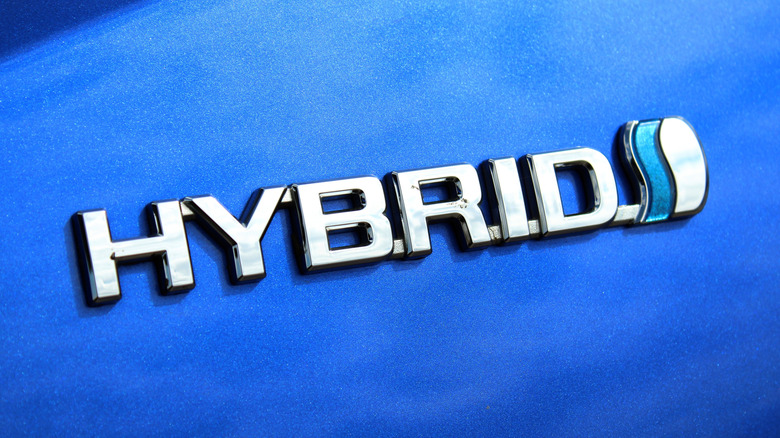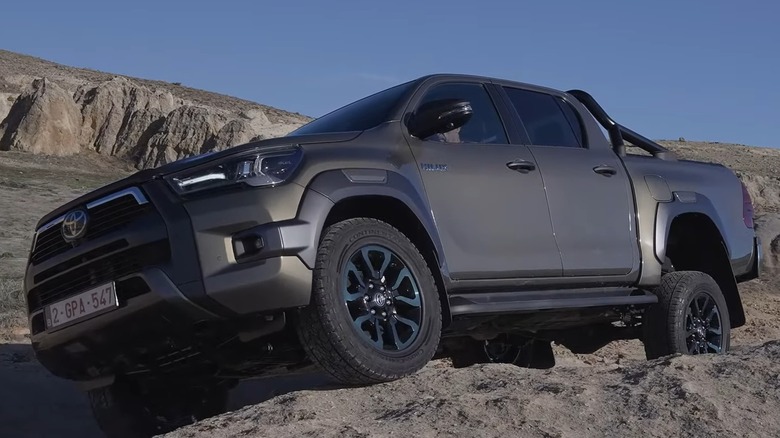Toyota Is Calling Out Automakers For Stretching The Definition Of 'Hybrid'
If you pay any attention to modern vehicles, odds are you're well-acquainted with the term "hybrid." For those unfamiliar with the word in this context, hybrid vehicles are those that use both an internal combustion engine as well as an electric motor. By using both gas and electricity while driving and braking, these vehicles are intended to be more fuel-efficient and better for the environment than traditional all-gas-powered vehicles. In recent years, hybrids have become more common, though there are many things to consider before buying a hybrid vehicle. In fact, some folks in high places don't even feel the badge is warranted for every advertised hybrid.
As reported by Drive, Toyota — a leading manufacturer and trailblazer when it comes to hybrid vehicles — isn't sold on a lot of the hybrid marketing from other brands. Toyota Australia Sales and Marketing boss Sean Hanley made it clear that the company feels other automakers aren't being fully honest about their supposed hybrid offerings: "Toyota is going to make it very clear what a hybrid system is for efficiency, what a hybrid system is for performance, and what a 48-volt-assisted system is. And a 48-volt-assisted system, in our opinion, does not represent hybrid drive. I think OEMs have a responsibility to make sure [customers are aware of the differences]." Through this statement, Toyota's Hanley draws a clear distinction between hybrid vehicles and 48-volt assisted ones. So, one has to ask, where exactly do they differ?
How 48-volt assisted systems compare to traditional hybrid systems
As mentioned, a traditional hybrid vehicle relies on both a combustion engine and an electric motor to operate. In this case, the two work in tandem, with the electric motor thrusting the car forward at low speeds and the combustion engine taking over at higher speeds. Some even come packed with two motors that act as a variable transmission. Overall, their voltage can range anywhere from 100 to 600 volts, depending on the car model in question. They also utilize regenerative braking to keep the battery charged up. This involves the kinetic energy of the vehicle running the motor backwards, which generates electrical energy within and replenishes the battery when slowing down.
Meanwhile, 48-volt assisted vehicles, often labeled as "mild hybrids," are a bit different. These vehicles don't rely solely on their electric motor for acceleration, with the battery simply there to support the combustion engine at low speeds or when starting. They take advantage of regenerative braking as well to keep the battery charged up. Toyota, the maker of several reliable hybrid rides, doesn't even market 48-volt assisted vehicles as hybrids. Instead, they're given the "V-Active" label. On the whole, their performance improvements are negligible compared to standard hybrids, with their fuel economy being a far less noticeable improvement compared to full hybrids over regular gas vehicles.
Evidently, there are some deviations between mild hybrids and full hybrids in terms of function and performance, hence the two different labels. Still, it remains to be seen if any automakers will take Toyota's remarks about the former vehicles and their advertising to heart and make changes.

